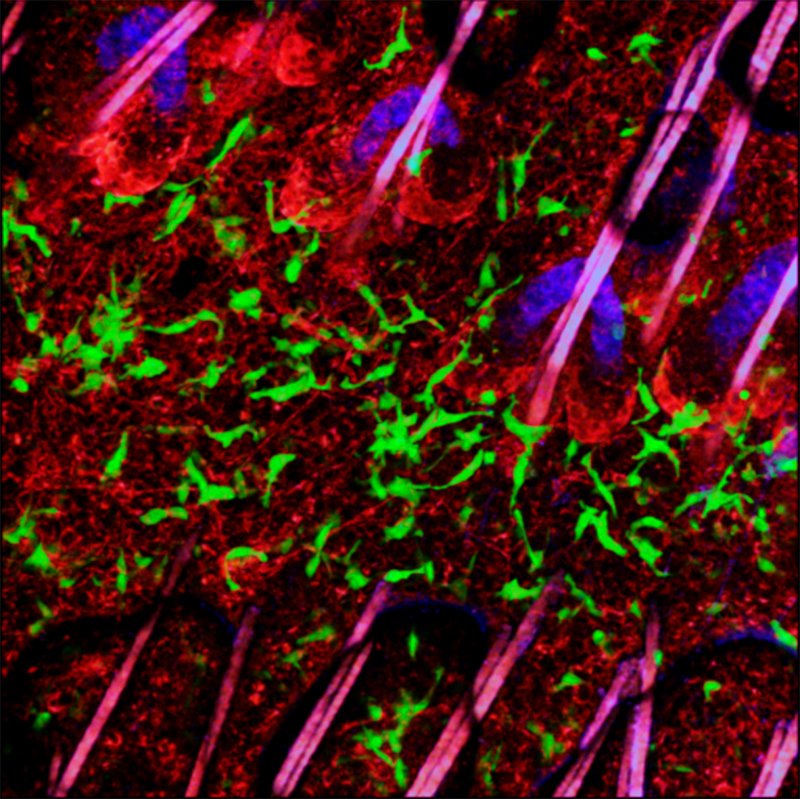Ultima 2P+
A state-of-the-art commercial two-photon microscope with new advances in field of view (~1.4x1.4 mm² with a 16x objective) , sensitivity, wavelength, and sample accommodation, the Ultima 2P plus delivers an ideal combination of flexibility, resolution, imaging depth and speed, allowing users to perform simultaneous imaging, stimulation and electrophysiology protocols with greater efficiency and effectivity of large neuronal populations.
The Ultima2P plus microscope (Bruker) is a two-photon microscope with a galvo-resonant path for fast functional imaging (e.g., of genetically encoded voltage indicators (GeVIs) or Ca2+ imaging (GECIs)) and a galvo-galvo path for structural imaging and flexible excitation patterns (raster and spiral scanning modes possible, selection of multiple region of interests…). The system has a remarkably large field of view (FN=28 mm) which allows to image a large number of neurons simultaneously using standard high-numerical aperture objectives. The synchronization with external recordings (electrophysiological, behavioral...) or stimulations (electrical, mechanical...) is made simple by the design of the hard-and software architecture. The objective lens can be tilted to angles as large as ±87°, to accommodate for the sample position (typically, the tilt of the animal’s head in in-vivo recordings).
At INT, the system is equipped with a dual channel femtosecond laser (Coherent Discovery), delivering a fixed laser emission at 1040 nm and a continuously tunable one from 700 nm to 1300 nm. Six GaAsP PMTs (Hamamatsu H10770) are used to detect fluorescence photons. Four channels in the epi direction are spectrally distributed as such: blue (460/50 nm), green (525/50 nm), red (595/50 nm), far red (660/40 nm); in the forward direction, a green channel (525/70 nm) and a red one (595/50 nm) are deployed below the sample. This system can be employed both for in-vivo and in-vitro experiments.
At INMED, it is coupled to 2 pulsed lasers i) one for 3 photon excitation (1300 nm and 1700 nm for green and red dyes respectively) and deliver also a 2P (1035 nm) line that could be used for photo-stimulation of channel rhodopsins controled independently in XYZ position of the scanner due to a second optical pathway and ii) one for two photon imaging (700 to 1050 nm). Those light sources should allow us to image neurons in vivo up to 1000 µm depth in the tissue and study the brain function in live comportment at very high spacial and temporal resolution.


